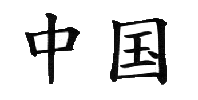China Beat Archive

China Beat Blog: Archive 2008-2012
Date of this Version
7-14-2009
Document Type
Article
Citation
July 14, 2009 in The China Beat http://www.thechinabeat.org/
Abstract
The mainstream media, both Western and Chinese, seem to be struggling to make sense of the deadly riots that broke out in the Xinjiang capital of Urumqi last week. Well-worn explanations on both sides have largely failed to grasp the complexities behind this new, unprecedented wave of mass communal violence in China. Not since the dying days of the Manchu Qing empire has China witnessed this sort of spontaneous ethnically-based violence.
With initial headlines like “Chinese riot police, Muslims clash in northwestern city,” “China in deadly crackdown after Uighurs go on the rampage,” and “Uighurs cling to life in People’s hospital as China’s wounds weep,” the foreign media painted the usual picture of the Chinese Communist Party and its security apparatuses brutally cracking down on the repressed and helpless minorities.
In much of the early reporting the emphasis lay on “the heavy-handed use of force by the Chinese security forces” and the subsequent tightening of media and Internet control, rather than the mob rule and racial retribution being doled out by Uighur and Han youth alike. When searching for answers to this wanton and impulsive brutality, the foreign media wheeled out its usual critique of state-sponsored violence against the Uighurs, Tibetans and other ethnic minorities in China.
Yet, this time, many of the dead and wounded appear to have been Han rather than ethnic minorities. The confusion surrounding this misidentification caused theLondon Evening Standard, among other media outlets, to use a photo of two blood-soaked Han women to invocate the “blood and defiance” and “Tiananmen’s spirit” of a group of Uighur women who confronted security forces several days after the initial incident.
Seeking to counter this familiar criticism, the official Chinese media went on the front foot; and, in sharp contrast to its handling of last year’s unrest in Tibet, immediately reported the Urumqi violence in graphic detail, hoping to define rather than suppress the message both domestically and internationally. Yet, its coverage provided no fresh explanations, reverting instead to familiar clichés and slogans.
Included in
Asian History Commons, Asian Studies Commons, Chinese Studies Commons, International Relations Commons


Comments
Copyright July 14, 2009 James Leibold. Used by permission.